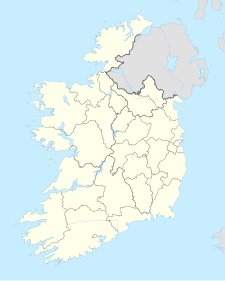This is an old revision of this page, as edited by Dormskirk (talk | contribs) at 08:31, 17 September 2021 (Undid revision 1044828988 by 2A01:B340:81:C927:4DBB:9B9F:53A:5FDA (talk)). The present address (URL) is a permanent link to this revision, which may differ significantly from the current revision.
Revision as of 08:31, 17 September 2021 by Dormskirk (talk | contribs) (Undid revision 1044828988 by 2A01:B340:81:C927:4DBB:9B9F:53A:5FDA (talk))(diff) ← Previous revision | Latest revision (diff) | Newer revision → (diff)Hospital in Cork, Ireland
| Cork University Hospital | |
|---|---|
| Health Service Executive | |
 Cork University Hospital Cork University Hospital | |
 | |
| Geography | |
| Location | Wilton, Cork, Ireland |
| Coordinates | 51°52′55″N 8°30′39″W / 51.881953°N 8.510740°W / 51.881953; -8.510740 |
| Organisation | |
| Care system | HSE |
| Funding | Public hospital |
| Type | Teaching |
| Affiliated university | University College Cork |
| Services | |
| Emergency department | Yes Accident & Emergency |
| Beds | 800 |
| History | |
| Opened | 1978 |
| Links | |
| Website | cuh |
| Lists | Hospitals in the Republic of Ireland |
Cork University Hospital (Template:Lang-ga) is a large university teaching hospital in Wilton, Cork in Ireland. Its academic partner is University College Cork. It is the only Level 1 Trauma Centre in Ireland. It is managed by the South/Southwest Hospital Group.
History
The hospital officially opened as Cork Regional Hospital in November 1978. A new Regional Cancer Centre opened in December 2009 and a new Cardiac Renal Centre, built at a cost of €85 million, opened in October 2010.
Services
The hospital has 800-beds. The hospital has its own hospital radio CUH FM offering full coverage to the hospital. The hospital also receives patients by helicopter: currently helicopters land on a purpose built helipad at the facilities of Bishopstown G.A.A. and Highfield R.F.C. near to the hospital. In 2011 it was confirmed on 6 April 2011 that the hospital would receive a new helipad costing €1.5m and, after a lengthy site selection process, a planning application for the helipad was submitted in November 2018.
Transport
A number of Bus Éireann city bus routes serve the hospital, including routes 201 and 208 (from Mayfield), 214 (from St Patrick's Street), 216 (from Monkstown via Douglas), and 219 (from Mahon). In addition, a number of regional bus routes also serve the hospital, including some services on route 232 (from Ballincollig), routes 236, 237 and 239 (from West Cork). Since Spring 2020 West Cork Connect also serve the hospital on their route to/from West Cork.
See also
References
- admin (18 February 2016). "The trauma system in Ireland". Irish Medical Times. Retrieved 10 December 2019.
- "Six hospital groups 'most fundamental reform in decades'". Irish Medical Times. 14 May 2013. Retrieved 27 May 2019.
- "40 years on, CUH looks to bright future". Echo Live. 27 November 2018. Retrieved 19 May 2019.
- "Large regional cancer centre opens in Cork". The Irish Times. 15 December 2009. Retrieved 20 May 2019.
- "Cork University Hospital extension opens". Raidió Teilifís Éireann. 22 October 2010. Retrieved 20 May 2019.
- "Charter to improve junior doctors' conditions at Cork University Hospital". Irish Examiner. 21 April 2016. Retrieved 19 May 2019.
- "CUH FM". ie.radio. Retrieved 20 May 2019.
- Hugh O'Connell (23 June 2013). "Chopped: GAA pitch will no longer be used as helicopter pad for Cork hospital". TheJournal.ie. Retrieved 19 May 2019.
- "New CUH helipad set to cost €1.5 million". Irish Medical Times. 6 April 2011. Retrieved 20 May 2019.
- "Plans for helipad at Cork University Hospital temporarily grounded". Irish Examiner. 15 January 2019. Retrieved 20 May 2019.
- "New West Cork bus service arrives in city for first time". Cork Beo. 24 February 2020. Retrieved 17 April 2020.
- "Travelling To CUH". Health Service Executive. Retrieved 20 May 2019.
| Cork City | |||||||
|---|---|---|---|---|---|---|---|
| Districts | |||||||
| Culture |
| ||||||
| Education |
| ||||||
| Health | |||||||
| History |
| ||||||
| Media |
| ||||||
| Parks and recreational areas | |||||||
| Religion | |||||||
| Streets | |||||||
| Water bodies | |||||||
| Other buildings and structures |
| ||||||
| Italics indicate proposed developments. Smaller font-size indicates locations or organizations that no longer exist. | |||||||